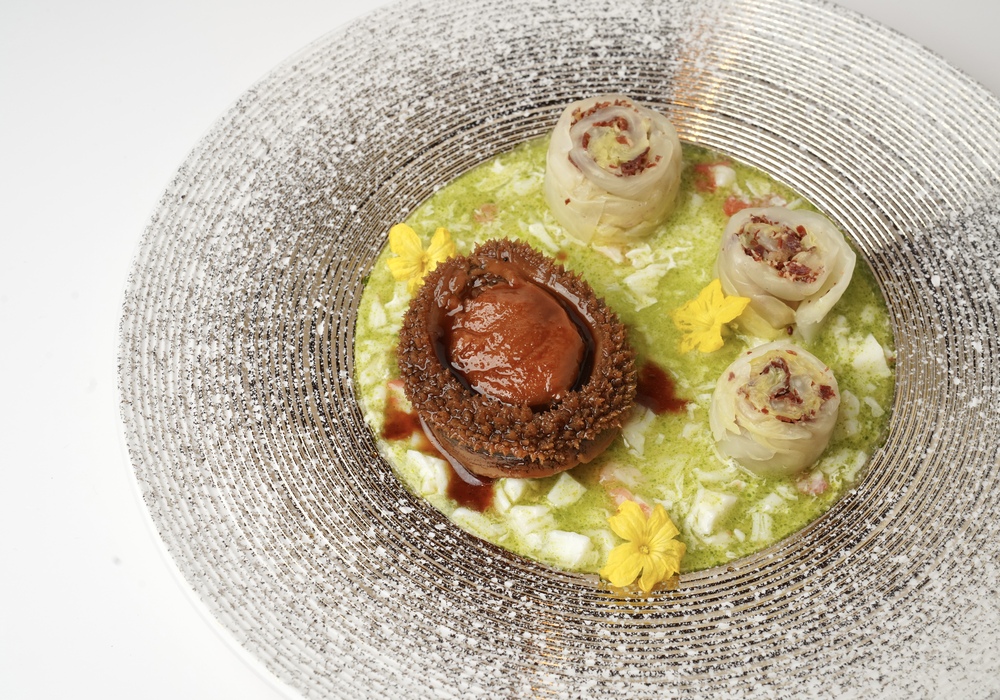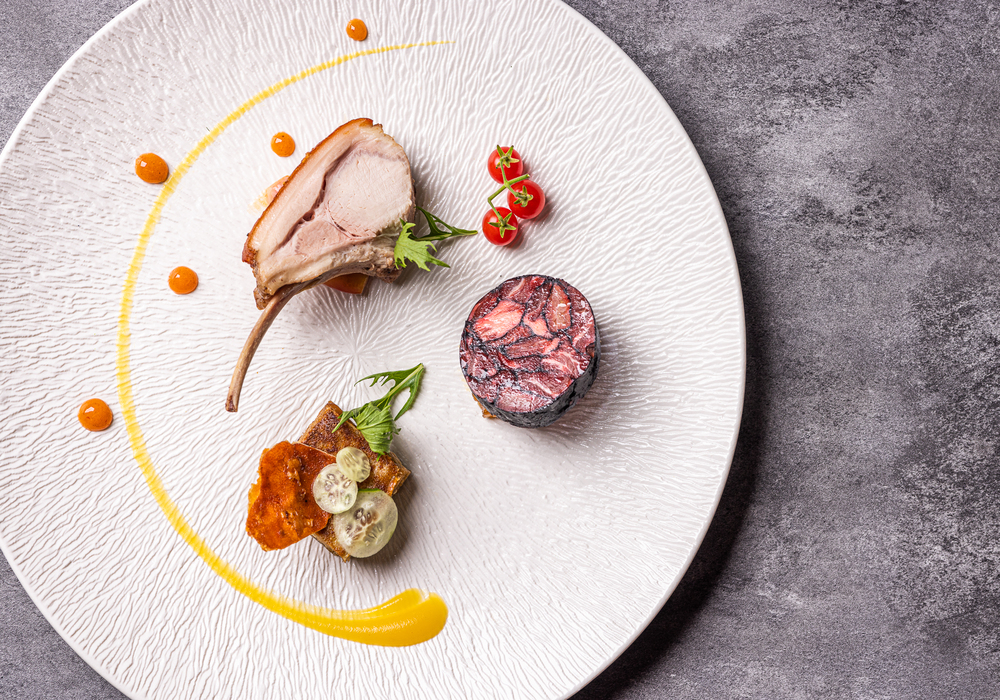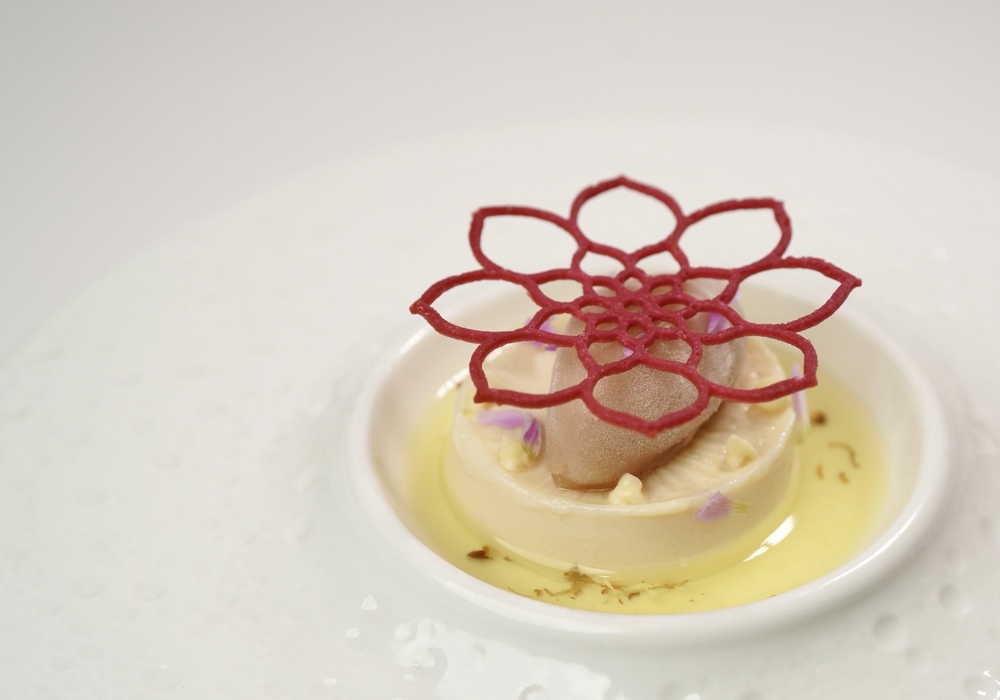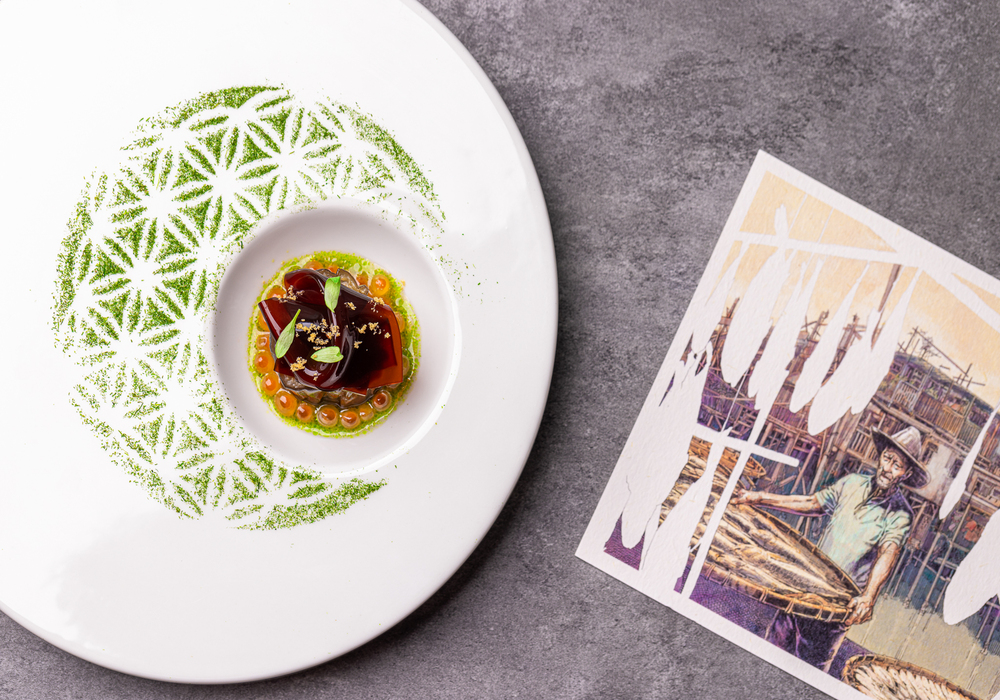1111 ONES Restaurant & Lounge Launches New Menu
1111 ONES Restaurant & Lounge, the Modern-Cantonese fine-dining restaurant located on Central’s On Lan Street, launches a new menu this Summer. Chef Will Leung reinterprets authentic Hong Kong cuisine and guides diners to embark on a culinary journey through everyday Hong Kong moments. 1111 ONES has always been committed to combining food and art whilst celebrating and providing a platform for local creative talent. 1111 ONES has worked with Jerry Cho, one of Hong Kong’s top ten local cartoonists and multimedia creators for the latest menu. For each dish on the menu, Cho has created an accompanying retrospective style illustration to depict the daily and iconic Hong Kong scenes.
There will be two menu options for dinner: the 6-course tasting menu (HK$1,288) and the 8-course ONES menu (HK$1,588). The tasting menu includes an amuse-bouche, a starter, a soup, an entrée, and main course (two choices) and dessert. The 8-course ONES menu includes the same dishes with an additional main course and pre-dessert. An additional wine pairing is available at HK$588 per person.
The first course is the Egg Waffle Rolls – three egg rolls that bring a new meaning to the popular Hong Kong snack regularly bought for gifts or simply an everyday treat. For this menu, Chef Leung has carefully prepared three different fillings including curry cauliflower, garlic leek crème fraiche and milk tea custard for the perfect kickstart to the tasting journey ahead.
The second course is the Salted Fish and Eggplant – a Hong Kong homely dish known for its rich aromas and flavours – which Chef has reinvented in his own way. In this dish the locally grown eggplant is first deep-fried and poached in yuzu dashi, before being topped off with beetroot jelly and sprinkled with homemade salted fish powder on top. The powder is made in-house by frying the salted fish, a rarer specialty that is sourced from Tai O. This is then served with yuzu dashi sauce, scallion oil and salmon roe. This combination provides a light flavour whilst still preserving the strong eggplant essence of this well-known Cantonese classic.
Next is the “Typhoon Shelter” style dish that features a signature ingredient to 1111 ONES – the local soft-shell lobster. The lobster head is deep-fried tempura style and the tail is blanched in court-bouillon to keep the meat tender. It is then served with “typhoon-style” condiments including breadcrumbs, deep fried garlic, chili, the soft-shell lobster shell and more. The fishermen at the typhoon shelters in Hong Kong are known for using whatever produce and ingredients they have readily available; similarly, 1111 ONES’s “typhoon shelter” dish is about adapting accordingly and using condiments that are leftover. The final parts of the dish are the lobster legs which are deep-fried until crunchy and served with a slightly sour sabayon sauce. The unexpected combination of these ingredients further enhances the savoury flavours of the soft-shell lobster meat.
The Consommé, where seafood is the hero, consists of dried scallop, fresh conch, dried shrimp, and Chinese ham. In the soup is a single dumpling filled with pork, sea cucumber and a cordyceps flower, with a crispy sea cucumber crisp layer on top. The mixture of the various seafood flavours is consistent throughout, and the soup pays homage to the renowned dried seafood street in Sheung Wan.

The Seafood main is the Norwegian King Crab and fresh abalone that has been slow cooked for eight hours in sake, mirin and “first draw” soy sauce (the first batch taken from soy beans after being fermented). It is then topped with a Cantonese classic egg white drop soup containing crab meat and dried scallop (commonly served in traditional Chinese banquets in Hong Kong), with an additional element of dill for a more refined flavour. Moreover, the dish includes Chinese cabbage rolls with fried diced Iberico ham, where the savouriness of the ham adds flavour to the sweet cabbage. The freshness of the seafood combined with the Cantonese flavours of this dish gives a very subtle nod to the Sai Kung seaside.

The main Meat course is the suckling pig trio of three types of Iberico pork, also inspired by traditional Hong Kong wedding banquet dishes. The first type is the pork chop rack, slow-cooked in sweet vinegar to help boost the appetite. This is paired with a light-flavoured white radish to neutralize the sweet and sour flavours. The second type of pork is like terrine where the pork is removed from the bone before being marinated and slow cooked overnight to make it extra tender. The skin is fried separately and used to wrap around the terrine and is then topped with a generous piece of crackling deep-fried pig skin. The finished product is served with Chinese plum sauce and freshly homemade pineapple purée and chutney. The last pork type of the “trio” dish is char siu pork jowl which is marinated in the same way as traditional Hong Kong barbecued pork. Each piece is coated with charcoal powder, bound together and then slow-cooked for one-hour until tender, and then glazed with osmanthus honey and grill to finish.
The pre-dessert of Yellow Fungus is a reimagined version of the popular stewed pear with snow fungus dessert. In this version the pastry chef uses a similar technique used to make Italian granita. The yellow fungus is first soaked overnight before being steamed with jasmine tea and rock sugar for one hour. This is then paired with sorbet of pear and sugar and garnished with yuzu chocolate. This healthy dessert not only helps with digestion but helps wash out the stronger main course flavours preparing diners for the main dessert ahead. 
The main dessert of Tofu and the last course on the menu, is inspired by the classic sweet dessert bean curd flower that can be found in local eateries across Hong Kong. The light dish comprises of soy milk, lotus seed paste, dried salted plum sorbet and osmanthus syrup, and is garnished with flower-shaped crisps made of raspberry. The simplicity of the plain-white-coloured dessert acts as a metaphor for leaving a blank canvas for diners to reflect and interpret their respective culinary journeys throughout the night.
Chef Will Leung says: “This new menu is based on Hong Kong’s daily dishes and food using different ingredients and cooking techniques. I want to bring diners a familiar but still new experience. At the same time, I also hope to take advantage of this exciting collaboration with cartoonist and illustrator Jerry Cho to pay homage to the unique art form of Hong Kong comics and its practitioners. The illustrated cartoons created for this menu depict aspects of the daily life of a Hong Kong person. Similarly, I hope to celebrate these elements with my own menu interpretation.”



